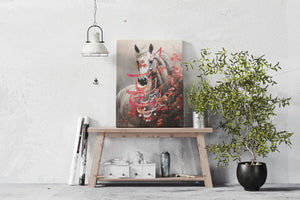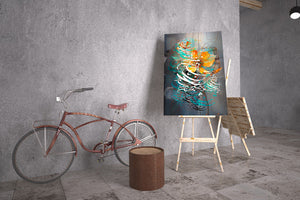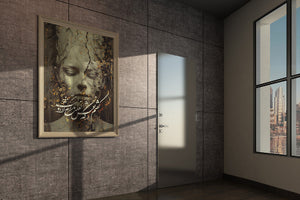Nasta’liq vs. Shekasteh: A Guide to Persian Calligraphy Styles
Oct 25, 2025
Discover the elegance, history, and cultural meaning behind the most iconic Persian calligraphy scripts.
Persian calligraphy is one of the most admired art forms in Iranian culture. Among its many styles, Nasta’liq and Shekasteh stand out as the most beautiful and expressive. Both have deep historical roots and continue to inspire modern Persian wall art and canvas print designs around the world. Understanding these two calligraphic styles helps you appreciate not only their aesthetic beauty but also their cultural and emotional significance.
The Origins of Nasta’liq: The Bride of Persian Calligraphy
The Nasta’liq script emerged during the 14th century in Iran and is often called “the bride of calligraphy scripts” because of its graceful flow and elegance. It was developed by Mir Ali Tabrizi, who combined the Naskh and Taliq scripts to create a smoother, more fluid form.
Nasta’liq soon became the preferred style for writing Persian poetry, especially the works of Hafez, Rumi, and Sa’di. Its gentle curves, balanced lines, and rhythmic movement reflect the lyrical and emotional depth of Persian literature.
In modern times, Nasta’liq calligraphy is widely used in Persian canvas wall art, symbolizing sophistication, romance, and poetic expression. Its balanced harmony makes it a perfect centerpiece for home decor, bringing both beauty and meaning to any space.
The Rise of Shekasteh: The Expressive and Artistic Script
Shekasteh (meaning “broken” in Persian) developed in the 17th century as a more free-flowing and artistic version of Nasta’liq. Calligraphers sought a faster and more expressive way to write, leading to a script that was both dynamic and spontaneous.
Shekasteh features tighter curves, connected letters, and more personal variations. It’s often described as emotional and human—capturing the energy of the writer. This makes Shekasteh calligraphy especially powerful when used in modern Persian art and digital wall designs, where creativity meets cultural heritage.
Each stroke of Shekasteh reveals individuality and emotion, giving it a uniquely contemporary feel even after centuries.
Cultural Significance and Modern Revival
Both Nasta’liq and Shekasteh are more than writing styles—they are visual representations of Persian identity, spirituality, and creativity. These scripts have influenced not only calligraphers but also painters, designers, and poets for generations.
In today’s art world, many digital artists and designers blend these traditional scripts with modern design elements, creating Persian calligraphy wall art that bridges the past and present. These artworks celebrate heritage while fitting seamlessly into contemporary spaces—making them a meaningful choice for homes and art collectors worldwide.





